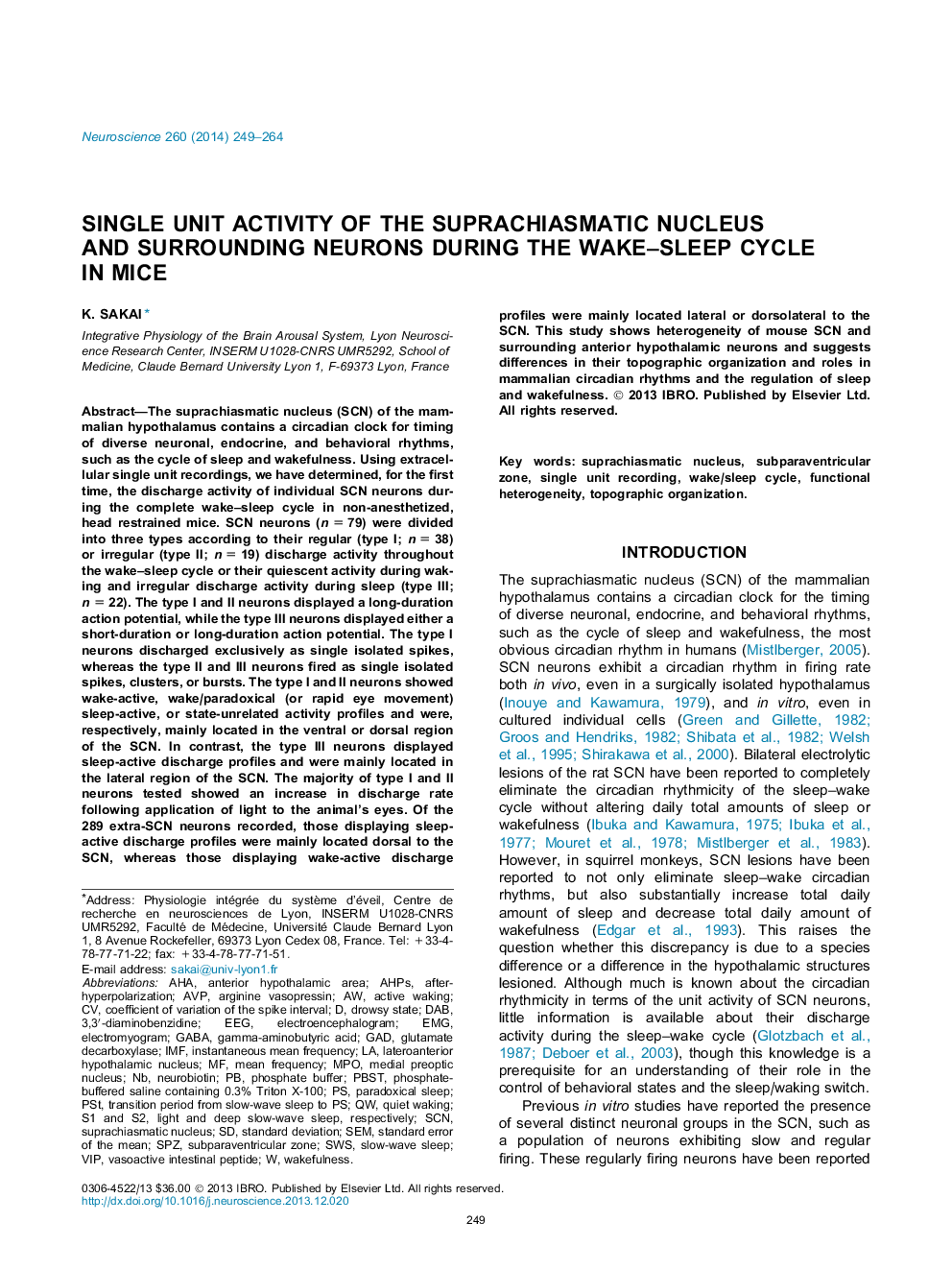| کد مقاله | کد نشریه | سال انتشار | مقاله انگلیسی | نسخه تمام متن |
|---|---|---|---|---|
| 6274093 | 1614816 | 2014 | 16 صفحه PDF | دانلود رایگان |
عنوان انگلیسی مقاله ISI
Single unit activity of the suprachiasmatic nucleus and surrounding neurons during the wake-sleep cycle in mice
دانلود مقاله + سفارش ترجمه
دانلود مقاله ISI انگلیسی
رایگان برای ایرانیان
کلمات کلیدی
AHPSAHAinstantaneous mean frequencyGADactive wakingdrowsy stateDABAVP3,3′-diaminobenzidine - 3،3'-diaminobenzidinegamma-aminobutyric acid - اسید گاما آمینو بوتیریکElectroencephalogram - الکتروانسفالوگرافیEMG - الکترومیوگرافیelectromyogram - الکترومیوگرافیIMF - صندوق بین المللی پولanterior hypothalamic area - منطقه هیپوتالاموس قدامیEEG - نوار مغزیarginine vasopressin - وازوپرسین آرژینینafter-hyperpolarization - پس از hyperpolarizationGABA - گاباGlutamate decarboxylase - گلوتامات دکربوکسیلاز
موضوعات مرتبط
علوم زیستی و بیوفناوری
علم عصب شناسی
علوم اعصاب (عمومی)
پیش نمایش صفحه اول مقاله

چکیده انگلیسی
The suprachiasmatic nucleus (SCN) of the mammalian hypothalamus contains a circadian clock for timing of diverse neuronal, endocrine, and behavioral rhythms, such as the cycle of sleep and wakefulness. Using extracellular single unit recordings, we have determined, for the first time, the discharge activity of individual SCN neurons during the complete wake-sleep cycle in non-anesthetized, head restrained mice. SCN neurons (n = 79) were divided into three types according to their regular (type I; n = 38) or irregular (type II; n = 19) discharge activity throughout the wake-sleep cycle or their quiescent activity during waking and irregular discharge activity during sleep (type III; n = 22). The type I and II neurons displayed a long-duration action potential, while the type III neurons displayed either a short-duration or long-duration action potential. The type I neurons discharged exclusively as single isolated spikes, whereas the type II and III neurons fired as single isolated spikes, clusters, or bursts. The type I and II neurons showed wake-active, wake/paradoxical (or rapid eye movement) sleep-active, or state-unrelated activity profiles and were, respectively, mainly located in the ventral or dorsal region of the SCN. In contrast, the type III neurons displayed sleep-active discharge profiles and were mainly located in the lateral region of the SCN. The majority of type I and II neurons tested showed an increase in discharge rate following application of light to the animal's eyes. Of the 289 extra-SCN neurons recorded, those displaying sleep-active discharge profiles were mainly located dorsal to the SCN, whereas those displaying wake-active discharge profiles were mainly located lateral or dorsolateral to the SCN. This study shows heterogeneity of mouse SCN and surrounding anterior hypothalamic neurons and suggests differences in their topographic organization and roles in mammalian circadian rhythms and the regulation of sleep and wakefulness.
ناشر
Database: Elsevier - ScienceDirect (ساینس دایرکت)
Journal: Neuroscience - Volume 260, 28 February 2014, Pages 249-264
Journal: Neuroscience - Volume 260, 28 February 2014, Pages 249-264
نویسندگان
K. Sakai,